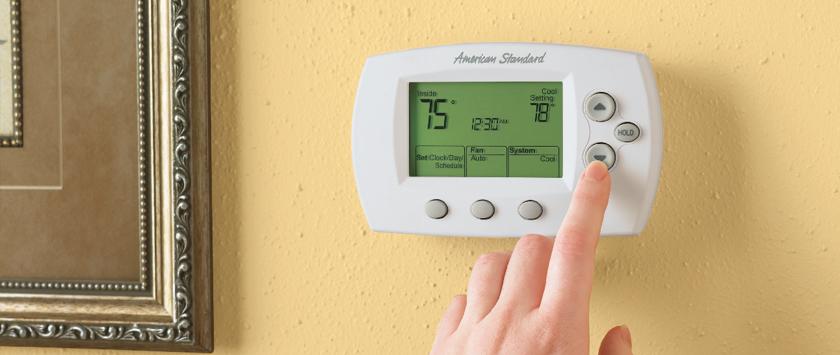
HVAC Programmable Thermostats
Many home owners may not be aware that HVAC systems contribute about half of a home's total utilities cost. Small adjustments to temperature settings can make a significant difference to total energy consumption. In most situations, a one degree change in temperature setting for each 8-hour period of time will result in a 1% reduction in energy usage. Many individuals adjust their thermostats 2-3 times per day to manage energy usage or use programmable thermostats. Unfortunately, approximately only 11% of most of the programmable thermostats are properly programmed to save energy because many homeowners find that they are just too complicated to use effectively.
If you have a "programmable" thermostat that is not supporting energy conservation or find that you sometimes forget to manually adjust your thermostat down at night or when your home is unoccupied, you may want to consider installing one of the latest "plug and play" wireless thermostats; within a week of use it can "learn" your routines and desired temperature settings. Although these devices cost significantly more than a basic manual thermostat, they will pay for themselves by reducing energy usage and increasing the comfort of your home or office. Another benefit is that they can be controlled remotely via SMART phone or website.
In addition to controlling energy usage via temperature settings, ensuring that your Heat Pump or A/C Unit has proper airflow is critical to achieving maximum efficiency. Dirty air filters can increase energy consumption of an HVAC system by 5-15%, according to the US Department of Energy. Replacing your HVAC system air filters on a regular basis before they accumulate enough dust and dirt particles to restrict airflow is an important element in maintaining system efficiency. Even if you currently replace filters routinely, some older HVAC systems may have restricted airflow issues on the indoor unit coils as, over time, dust particles will accumulate on the coils and reduce energy efficiency and impact heating/cooling performance levels. In addition to filter replacement, inspecting the air return lines (typically located in a crawlspace or attic) to ensure there is no unfiltered air entering the HVAC system through an open seam or crack in the ductwork is an important aspect of annual HVAC maintenance.